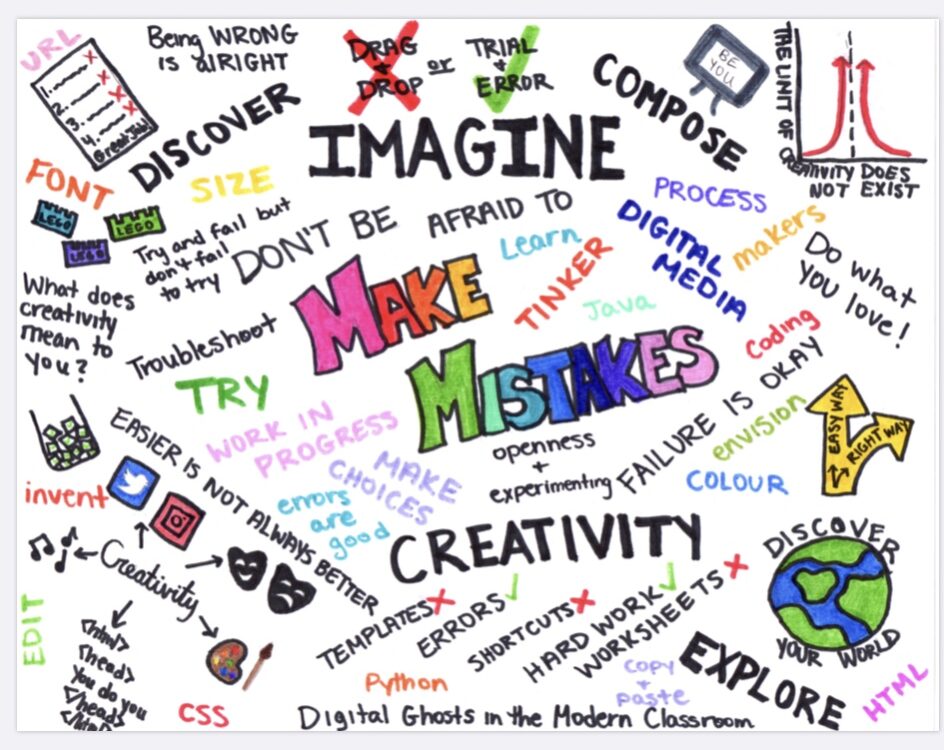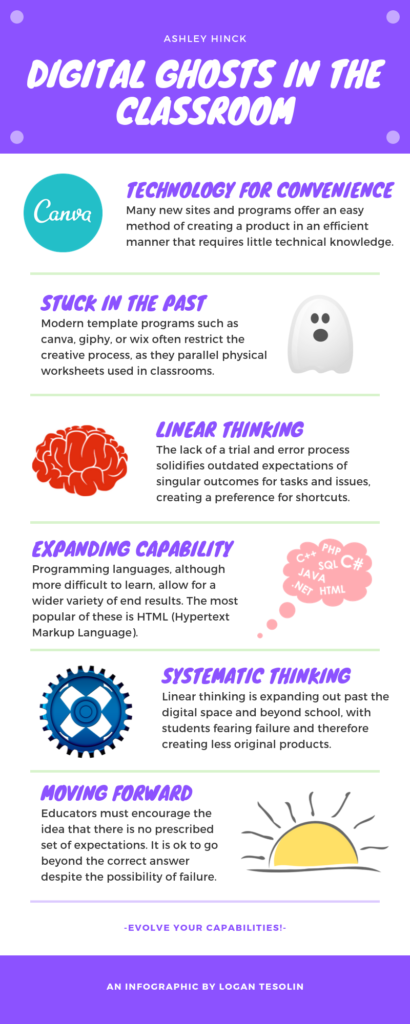Good Afternoon, I read the article “Digital Ghosts in the Modern Classroom” by Ashley Hinck.
I have been an avid social media user and with that being said, I designed to compose a twitter essay to share my thoughts. Yes it is the month of October, however Hinck’s article isn’t talking about those ghosts, but instead the ghosts that exists from using worksheets and simple template systems in school.

In the article, she works towards defining Critical Digital Pedagogy and how students use their own personal experience to influence their work in the classroom. One of the main arguments she had was how work-sheets, drag-and-drop templates and other short cut systems are limiting the creativity of students.

I was able to relate to this article in many ways, from legos in my childhood to easy click by click social media platforms in my everyday life. It’s interesting to see how teachers use technology ( or DON’T use) in their classroom. Even with all the options that are out there, students still have limited access to being creative.
Drawing on previous education and coaching experience, students don’t know how to look at failure/making-mistakes properly. Being uncomfortable and working outside the “box” will allow both teachers and students to gain valuable life skills such as problem solving. Many students and players that I coach forget that learning is a process. There are tones of ways to get to the right answer, and Hinck really hammers this thought home in her piece.

During this project, I chose twitter because it was something I was familiar with. Something that students/teachers will do everyday is lean towards what they’re comfortable with. Some would say that we are being lazy, but others (me included) would say it was easy.
I appreciated this article written by Hinck, and I look froward to inspiring my future students to be owners/creators of their own work. The process of learning is one that I know goes unappreciated, and allowing students to take control of their own creativity and learning from their mistakes, we will set them up for success in all their future endeavours. #UWinDig

You can read the remainder of my twitter essay by simply clicking here!




































